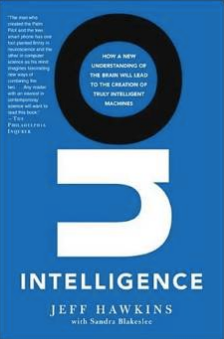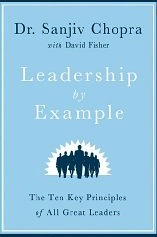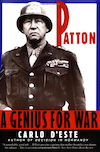Spencer Stuart’s Global Mindset Criteria
 Executive search firms have a great pulse for the hiring market and an intimate understanding of the personnel needs of corporations. As our world and markets become more and more global, a new set of hiring criteria have emerged that reflect corporations’ needs for global citizens. Recently, I came across an interesting and thought-provoking set of criteria around the topic of the global mindset offered by Spencer Stuart, a leading executive search firm. Because I found that I can certainly relate to their criteria, I will plan to share my own list in a future post. For now, here’s what Spencer Stuart suggests:
Executive search firms have a great pulse for the hiring market and an intimate understanding of the personnel needs of corporations. As our world and markets become more and more global, a new set of hiring criteria have emerged that reflect corporations’ needs for global citizens. Recently, I came across an interesting and thought-provoking set of criteria around the topic of the global mindset offered by Spencer Stuart, a leading executive search firm. Because I found that I can certainly relate to their criteria, I will plan to share my own list in a future post. For now, here’s what Spencer Stuart suggests:
Marketing executives with a global mindset possess a level of cultural fluency which sets them apart from their peers. They have often acquired this as children, encouraged by their parents to be tolerant, flexible and to have “eyes wide open to the world.” Far from being phased by situations that take them out of their comfort zone, they embrace new experiences and new markets, have a willingness to learn, and actively seek out opportunities to enhance their understanding of different cultures and markets. This cultural aptitude comprises several qualities which are outlined below.
Humility
The natural desire to exert influence in a new role needs to be tempered by a willingness to learn. Management pride is dangerous and the global marketing executive needs to be smart and confident enough to admit to what they don’t know. It forces them to be open to new learning and to consider the opinions of others in the team. In a situation of power, it’s easy to be seduced into thinking that you know everything or that you are supposed to.
One of the main reasons international executives do not work out is that they try to impose their own cultural or world view, trying to make everything operate the way it does in their own market (often company headquarters). Natural relationship-builders who don’t make snap judgments tend to have humility. Read more 
The Art of Choosing
 I recently attended a talk on choice given by Professor Sheena Iyengar, the inaugural S.T. Lee Professor of Business in the Management Division at Columbia Business School and the Director of the Global Leadership Matrix initiative. Choice is a very powerful tool in our lives as it helps us get from here to the future, but sometimes it is too much. In order to get the most from choice, we must be choosy about choosing. “In reality, many choices are between things that are not that much different. The value of choice depends on our ability to perceive differences between the options” according to Prof. Iyengar.
I recently attended a talk on choice given by Professor Sheena Iyengar, the inaugural S.T. Lee Professor of Business in the Management Division at Columbia Business School and the Director of the Global Leadership Matrix initiative. Choice is a very powerful tool in our lives as it helps us get from here to the future, but sometimes it is too much. In order to get the most from choice, we must be choosy about choosing. “In reality, many choices are between things that are not that much different. The value of choice depends on our ability to perceive differences between the options” according to Prof. Iyengar.
Leadership by Example
 We all have the potential to become leaders. Very few of us are leaders all the time, but we all encounter moments in our lives when we can, and should, lead others. In a committee, in business, at a social club, at home, or at a religious institution, we all find a time in our lives when we have an opportunity to lead. Few people set out knowingly to become leaders; rather, they see a need and they find a way to take on the challenge, and often, others choose to follow their example.
We all have the potential to become leaders. Very few of us are leaders all the time, but we all encounter moments in our lives when we can, and should, lead others. In a committee, in business, at a social club, at home, or at a religious institution, we all find a time in our lives when we have an opportunity to lead. Few people set out knowingly to become leaders; rather, they see a need and they find a way to take on the challenge, and often, others choose to follow their example.
Dr. Sanjiv Chopra, Professor of Medicine and Faculty Dean for Continuing Medical Education at Harvard Medical School, is one of the most impressive and enlightened people who I know. He has recently published, Leadership by Example, a book that is both engaging and thought-provoking. The book is organized by the LEADERSHIP mnemonic which Dr. Chopra explains as:
L –  Listen, E – Empathy and compassion, A – Attitude, D – Dreams and decisiveness, E – Effectiveness, R – Resilience, S – Sense of purpose, H – Humility and humor, I – Integrity and imagination, P – People skills and principles.
Listen, E – Empathy and compassion, A – Attitude, D – Dreams and decisiveness, E – Effectiveness, R – Resilience, S – Sense of purpose, H – Humility and humor, I – Integrity and imagination, P – People skills and principles.
Dr. Chopra recognizes that leadership is an important attribute, but it is very difficult to grasp as a concept. So rather than taking a theoretical approach, he has deliberately recounted a number of leadership examples to motivate all of us.
Great leaders move mountains, but they first move people. Even after having read it, I have kept it on a nearby shelf, as I plan to revisit it on a regular basis. I encourage you to do the same.
Think Big, Not Small
Business leaders need to deploy big, bold strategies to stay competitive and continue to take share from the competition. These strategies need to challenge conventional thinking and span multiple years. But to deploy such strategies, leaders often need to overcome institutionalized small-culture thinking, narrow-mindedness and aversion to risk that block accelerated growth. If you do manage to overcome such internal challenges, your reward is bold, doable strategies that excite your employees and leave your rivals behind.
So why is there a prevailing think-small culture in most companies? Here are a few reasons:
- Conventional wisdom considers historical performance and market growth rates vs. also including relative market share to develop annual objectives
- Most compensation plans are geared toward quarterly and annual performance, so there is a natural incentive to set realistic goals to ensure their achievement and exceed them Read more

Management Principles – Tom Heiser, RSA President
 Within seconds of meeting Tom Heiser, you immediately sense his high level of intensity, focus, competitiveness and energy that has driven him to a successful career in the IT industry. Tom joined EMC in 1984 as a sales trainee and rose to increasingly senior sales and executive roles. He has played a key role in EMC’s evolution into a broad-based information infrastructure leader, including being directly involved in the formation of EMC’s Cloud Infrastructure and Services Division. He also served as EMC’s SVP, Corporate Development and New Ventures. He is now President of RSA, EMC’s Security Division, with ~$1B in revenues, 3,000 employees worldwide and more than 30,000 customers.
Within seconds of meeting Tom Heiser, you immediately sense his high level of intensity, focus, competitiveness and energy that has driven him to a successful career in the IT industry. Tom joined EMC in 1984 as a sales trainee and rose to increasingly senior sales and executive roles. He has played a key role in EMC’s evolution into a broad-based information infrastructure leader, including being directly involved in the formation of EMC’s Cloud Infrastructure and Services Division. He also served as EMC’s SVP, Corporate Development and New Ventures. He is now President of RSA, EMC’s Security Division, with ~$1B in revenues, 3,000 employees worldwide and more than 30,000 customers.
Tom is absolutely one of the best in the business and he’s offered to share his management principles.












